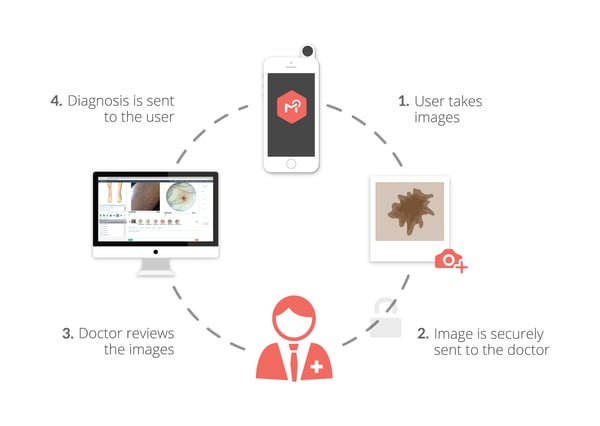Part 1 of this article will describe the main regulatory areas of live-interactive teledermatology practices as outlined by the American Academy of Dermatology (AAD) and what impact their application has on its users.
1. Connectivity as the driving force behind the expansion of teledermatology
As a greater portion of the population utilizes technology in their daily lives, the chance to obtain teledermatology services continues to increase.1 Indeed, the convenience of teledermatology services is reflected in the more than 900% use growth in the United States over a period of 5 years.2 The idea of avoiding the logistics associated with regular in-clinic consultations combined with shorter diagnosis times makes teledermatology an attractive option for many patients.3
Despite the great advantages of connectivity and virtual interactivity, teledermatology services still pose challenges as to what their scope should be, raising questions such as when an in-person follow up appointment is necessary, what equipment should be utilized for servicing patients and who should be deemed liable for any professional misconducts or negligence. The positive advantages of this technique can turn opaque without proper regulation and this is why the AAD provides a position statement to offer guidance on regulatory matters for safer and more impactful practices.4
.png?width=600&name=Dermatologist%20Investigating%20Patient%20File%20on%20DermEngine%20Intelligent%20Dermatology%20Software%20(1).png)
2. 5 regulatory areas for live-interactive teledermatology practices as convened by AAD
Teledermatology practices are divided into two main categories: “Live-Interactive (LI)” and “Store-and-Forward (SAF)” teledermatology. Both methods require no physical interaction between patient and doctor, however they differ in the nature of the virtual communication. As suggested by its name, LI approach involves real-time exchange while SAF describes the deferred analysis of a patient’s case.
As noted by AAD, the main areas to regulate and set guidelines for LI Teledermatology are as follows:
- Technical Equipment Necessary: The interactive nature of this approach requires a minimum connection speed (>384 kbps) and a screen resolution of 800x600 pixels compatible with diagnostic purposes.
- Credentialing & Privacy Regulation: in order for practitioners to offer LI teledermatology services, they need to count on the proper credential as directed by The Joint Commission of the AAD. As well, privacy is regulated by the Health Insurance Portability and Accountability Act (HIPAA) and all patient information collection, handling and storage must be compliant of the principles established in such act. Similarly, encryption of online networks is not mandatory, but highly recommended to avoid data loss or breaches.
- Licensing: given the geographical variation nature of the regulation of this services, it is mandatory to consult the law applicable to the state where LI teledermatology services are to be offered. However, as a general rule, a doctor can only provide teledermatology services for patients residing in the geographical area for which, by law, it is licensed to practice.
- Reimbursement Policy: although still an evolving matter, the regulation over reimbursements by federal and private healthcare insurance companies establishes coverage as long as patients are located outside urban areas. Both Medicare and Medicaid follow this presumption, although the latter has some further restrictions. Similarly, the majority of private companies will reimburse only if patient is located in a low-populated area.4
- Liability: the degree of responsibility and liability vary on case-to-case and state-to-state bases. However, in general terms the liability falls on the dermatologist providing care to the patient or in the case of a referring situation, it may be shared between the referring professional and the dermatologist offering care. In all cases, doctors are advised to double check their liability policy with the respective insurance institutions.4

Final Thoughts
LI teledermatology is a growing subset of telemedicine services designed to reach underserved populations. Despite the great advantages brought by its applications in everyday practice, there are standards needed to be agreed and followed to guarantee the integrity and quality of the care offered. In Part 2 of this article, the guidelines established by AAD will be shared for store-and-forward teledermatology.
-The MetaOptima Team
Would you like to stay updated on the latest news of MetaOptima and its dermatology solution, DermEngine? Subscribe to our blog below! If you're ready to experience DermEngine's intuitive features for yourself, sign up for a demo today!
Sources
1-https://mhealthintelligence.com
2-https://mhealthintelligence.com
3-https://www.beckershospitalreview.com
4-https://www.aad.org





